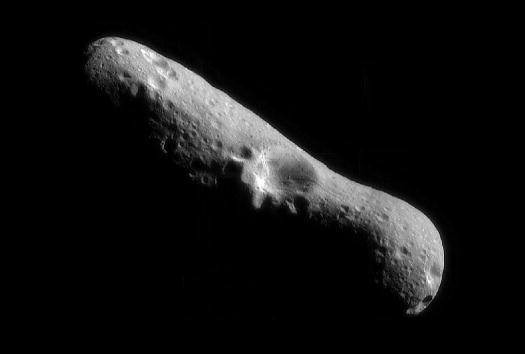The NASA-watched mile-wide asteroid's image has been captured by the Virtual Telescope Project, a research astronomy service founded by Italian astrophysicist Dr. Gianluca Masi.

Space experts said that since the educational agency was able to take the first photo of the massive space rock, it means that the asteroid is also nearing Earth.
But, this doesn't mean that it will collide with the planet. NASA said that the "7335 (1989 JA)" asteroid's nearest distance from Earth is expected to be around 2.5 million miles.
The Virtual Telescope Project said that they captured the image of this space rock after it reached 5.8 million kilometers (3.6 million miles).
NASA-Watched Mile-Wide Asteroid's Image Captured
According to Mashable's latest report, the massive asteroid is around 1.1 miles wide, making it one of the largest asteroids spotted by NASA and other space agencies.
PhysOrg reported that 1989 JA is traveling at around 30,000 mph.
"To provide some context, that is 17 times the speed of a bullet through the air. At this speed, the asteroid could travel around the planet Earth in 45 minutes," explained Franck Marchis, the chief scientific officer of Unistellar, a telescope company.

On the other hand, the giant space rock is expected to pass across the planet on May 27, at around 2:26 p.m. UTC.
If you want to watch the passing of the 1989 JA asteroid, you can visit the Virtual Telescope Project's official website since the service will live stream this space event.
Now, should people worry about the passing of the massive asteroid?
Mile-Wide Asteroid NOT Alarming
Although NASA is keeping an eye on the new mile-wide asteroid, space experts said that it is unlikely to collide with Earth.
If there's a possibility, then the international space union will issue an official warning to the White House and other government agencies as soon as possible.
As of writing, NASA is using its advanced James Webb Space Telescope to track solar system objects, as well as stars, distant galaxies, and other heavenly bodies.
Thanks to the space agency's efforts, it was able to track a moving asteroid for the first time. You can visit Space.Com's official report to see more details.
Meanwhile, the latest deal between Biden and Japan's PM Kishida will allow NASA's Artemis mission to include a Japanese astronaut.
On the other hand, NASA's James Webb Telescope is expected to explore the solar system.
For more news updates about the NASA-watched asteroid and other space objects nearing Earth, always keep your tabs open here at TechTimes.
Related Article : NASA Hubble Telescope Captures Galaxy Twice as Big as Milky Way; Here's What Makes NGC 474 Unusual
This article is owned by TechTimes
Written by: Griffin Davis
ⓒ 2025 TECHTIMES.com All rights reserved. Do not reproduce without permission.




